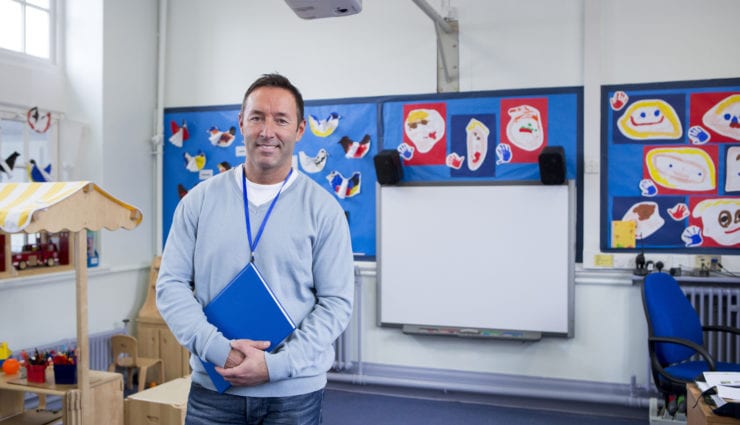03/20/2020 by Carney Sandoe Staff |
The Schoolroom
Navigating the Demo Lesson While Schools Are Closed

The impacts of the coronavirus have closed schools and forced them to transition classroom instruction to distance and online learning. As things change at a rapid pace, “school” in the traditional sense is going virtual – and that means so are other operational aspects of schools, including hiring.
Video interviewing using tools such as Skype and Zoom has been standard practice in hiring for some time. But there are certain parts of the hiring process, such as the demo lesson a teaching candidate has to present, that are usually done in-person in front of a classroom of students.
How can schools adjust their approach to the demo lesson while they are closed? We asked a few schools with experience in this area to share how they accomplish a virtual demo lesson.
Ask candidates for pre-recorded videos.
Many educators have digital portfolios, video channels, or other recordings of their teaching in action. “This is a great place to start when an in-person demo lesson is not feasible,” said one school that hires internationally. “When we first started asking candidates for videos, we were surprised by how many had videos of themselves in their classrooms.” The school's hiring committee watches the videos several times and engages in a thorough discussion around them with the candidate.
Hold a virtual lesson with students while they are at home.
This requires some additional preparation, coordination, and the right technology, but isn't impossible. One school told us they plan to arrange for their candidates to present their lessons live online to a small group of students (no more than six) using their school's online learning system. This still allows valuable student-teacher interaction to take place while keeping everyone safe.
Consider adjusting the format.
A demo lesson can mean different things for different schools. Instead of one demo lesson that's 40-50 minutes long, a boarding school we spoke to said they ask candidates to prepare two 10-15 minute lessons to present to either a group of students or to the hiring committee virtually. The shorter format is easier to execute in a virtual environment (for all parties involved) and presents a unique challenge to the candidate who might be used to a longer time frame.
Another school that prefers the shorter format told us they have their candidates present a 20-minute lesson to the hiring committee, including to at least one teacher from the same grade or department. Afterwards, the committee gives its feedback and presents the candidate with a challenge or question related to the lesson (i.e. “Some students aren't grasping the concept you are trying to convey. How would you present the lesson differently to them?”). The next day, the candidate gives the same lesson again, only revises it based on the committee's feedback.
Shifting the idea of a demo lesson altogether, a school in New York is willing to accept from candidates a full set of materials around one recently taught lesson: lesson plan, unit plan, applicable handouts or visual aids, student work samples at various levels, rubrics, etc. An in-depth discussion is held with the candidate around these materials (see more on this below).
Ask deeper questions.
“Even when done in front of a room of students, the demo lesson doesn't reach its true value without the fuller, complete picture,” said one school. Whether it's presented to students virtually, just to the hiring committee, or not presented at all – it's only prepared for part of a discussion – a lot can be learned about a candidate's teaching ability by asking the right questions. This school has a candidate walk through their entire demo lesson planning process: how they thought about it, what intentional decisions they made, why they chose certain activities or questions, etc. The school then asks questions to help paint a bigger picture: Have you taught this lesson or a similar one before? How did it differ, if at all, and why? How did this lesson fit into your plans for the day/week/month? How do you ensure your lessons apply to all types of learners?
Another school shared a similar example. For primary teachers, they have candidates prepare an interactive read-aloud. After candidates present, the school asks them to go through their planning process and explain things like: Why did you choose to pause at certain points and not others? Why did you select this book? What are your specific comprehension goals? How do you see this fitting into other parts of the curriculum?
Ask for student feedback.
One school we spoke to said they utilize student feedback forms as part of the candidate's evaluation. The candidate's current students fill the evaluations out and send them back to the interviewer without the candidate seeing the responses. For younger students, often a fellow teacher is enlisted to help the students complete the forms. In a virtual hiring situation where students are not gathered in a classroom, this same process can easily be accomplished digitally.
The feedback forms can be fairly simple for children in lower grades (i.e. using a rating system); forms for older students can include areas to write in comments or notes. Formstack has a digital evaluation form already built if you prefer to go the digital route, Teachers Pay Teachers has a variety of options for different grade levels, or a simple Google search will yield examples you can use to build your own.
Do you have other tips to share? Comment below!
Leave a Comment
0 Comments
There are no comments on this blog entry.